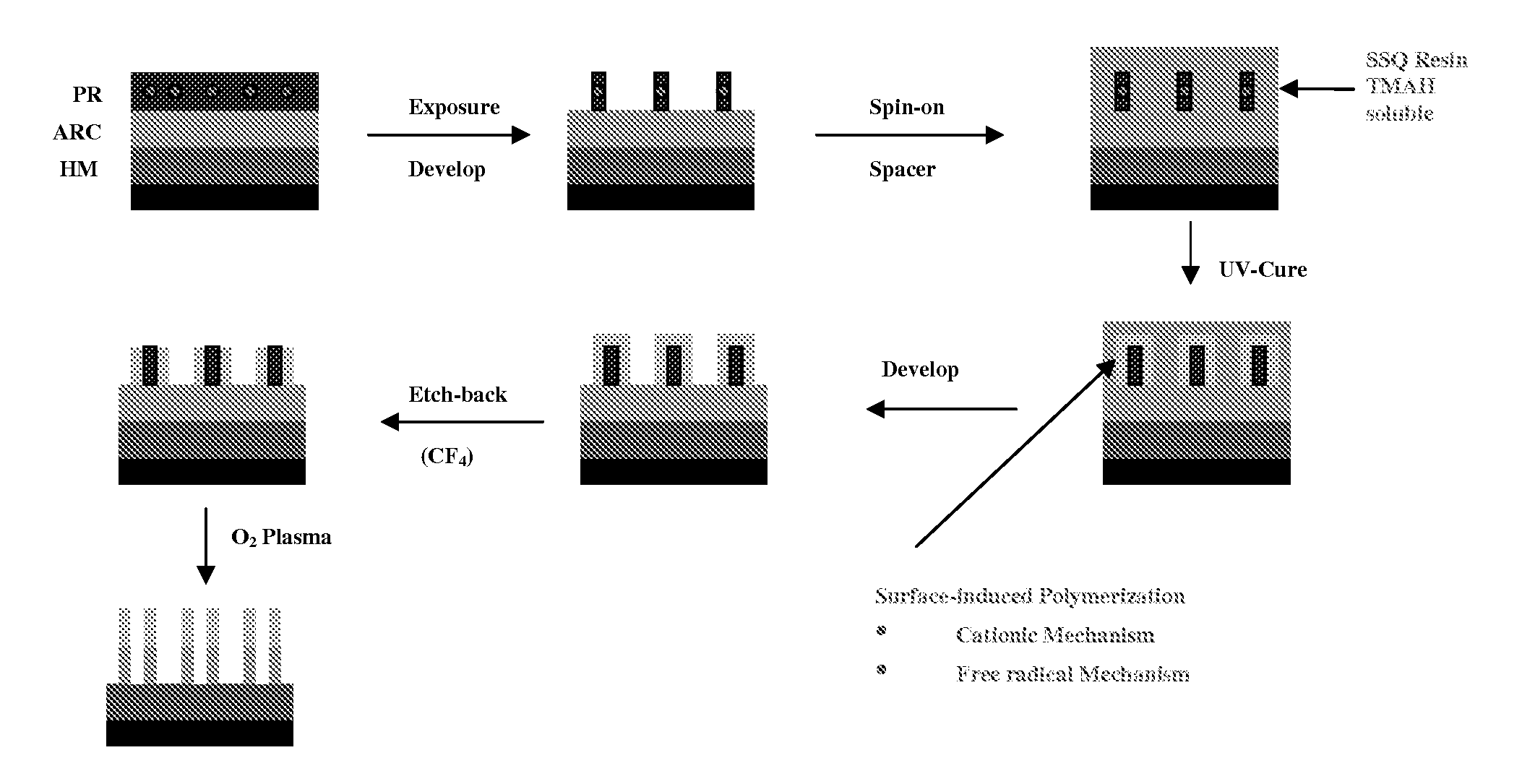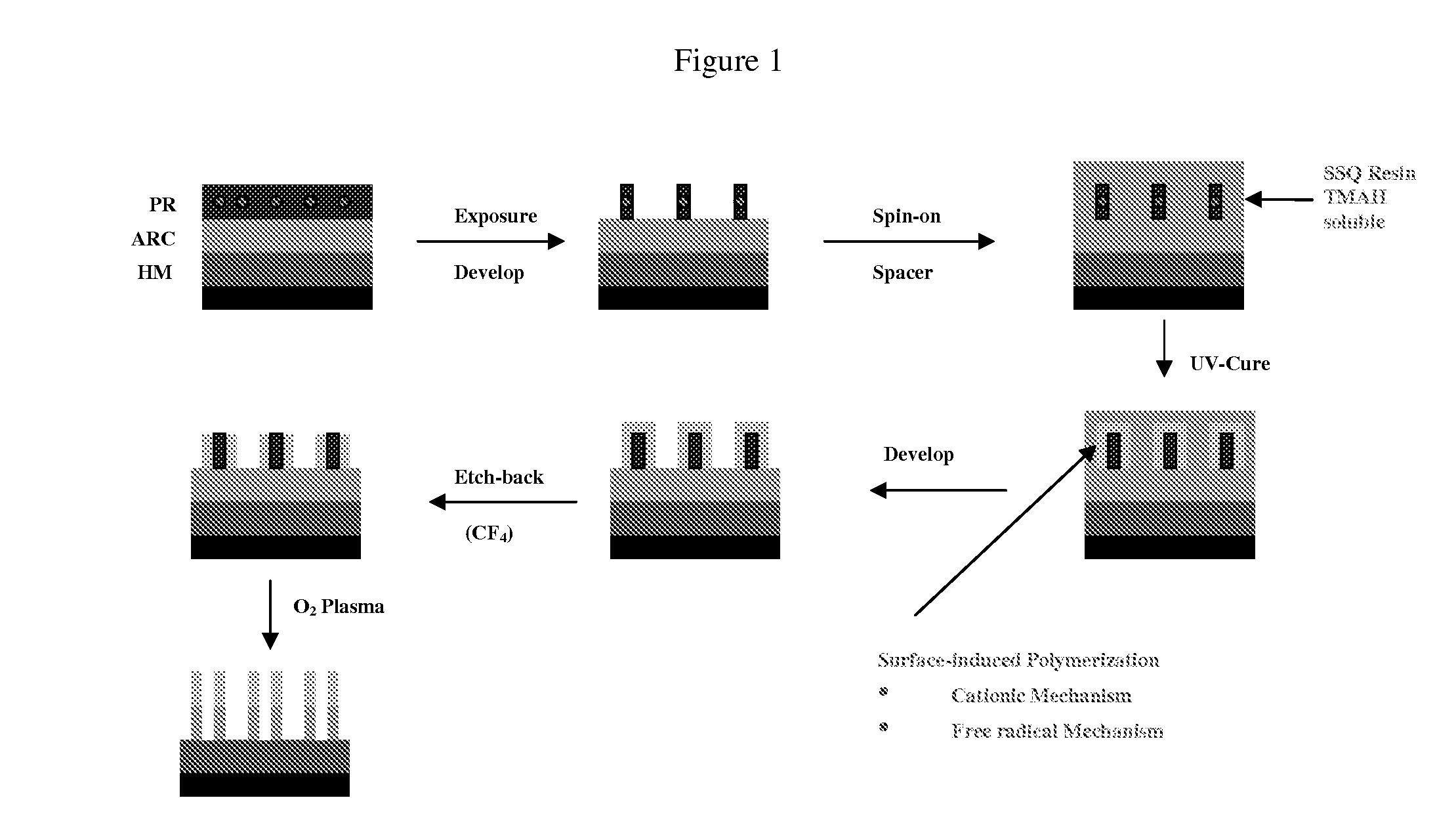Method And Materials For Double Patterning
- Summary
- Abstract
- Description
- Claims
- Application Information
AI Technical Summary
Problems solved by technology
Method used
Image
Examples
example 1
Synthesis of T(H)0.65T(CHEp)0.3T(PEO)0.05
[0049]To a 500 mL flask containing hydrosilsesquioxane in toluene (Mw=2200, 212 g, 12.5% wt in toluene), allyl mono-methyl polyethylene glycol (18.75 g), and vinyl cyclohexene oxide (18.63 g) were added a few drops of a platinum catalyst. The mixture was stirred for two hours at 80° C. The solution of the selected solvent was obtained by solvent-exchange to 10% weight. The solution was filtered through a 0.2 micron PTFE filter and stored in a HDPE bottle. GPC (vs. PS): Mw=4360, PDI=3.04.
example 2
Synthesis of T(H)0.55(MA)0.30T(PEO)0.15
[0050]To a three-necked 3 L flask were loaded with ethyl acetate (100 g), Me(OCH2CH2)5-9O(CH2)3SiCl3 (28.84 g), methacryloxypropyltrimethoxysilane (37.25 g), and HSiCl3 (37.25 g). A solution of ethyl acetate (300 g) and water (27 g) was added to the flask over a one-hour period. The solution was allowed to body for one hour. The resin solution was then washed with DI-water and solvent exchanged to iso-butanol using a rotary evaporator. The solution was stripped and diluted to 10 wt % in i-butanol. The solution was filtered through a 0.2 micron PTFE filter and stored in a HDPE bottle. GPC (vs. PS): Mw=9530, PDI=2.02.
example 3
Synthesis of T(H)0.6T(CHEp)0.3T(PEO)0.1
[0051]To a 500 mL flask containing hydrosilsesquioxane in toluene (424 g, Mw=2200, 12.5% wt in toluene), ally mono-methyl polyethylene glycol (25 g), and vinyl cyclohexene oxide (37.26 g) were added a few drops of a platinum catalyst. The mixture was stirred for two hours at RT. The solution of the selected solvent was obtained by solvent-exchange to 10% weight. The solution was filtered through a 0.2 micron PTFE filter and stored in a HDPE bottle. GPC (vs. PS): Mw=8900, PDI=4.26.
PUM
 Login to view more
Login to view more Abstract
Description
Claims
Application Information
 Login to view more
Login to view more - R&D Engineer
- R&D Manager
- IP Professional
- Industry Leading Data Capabilities
- Powerful AI technology
- Patent DNA Extraction
Browse by: Latest US Patents, China's latest patents, Technical Efficacy Thesaurus, Application Domain, Technology Topic.
© 2024 PatSnap. All rights reserved.Legal|Privacy policy|Modern Slavery Act Transparency Statement|Sitemap


